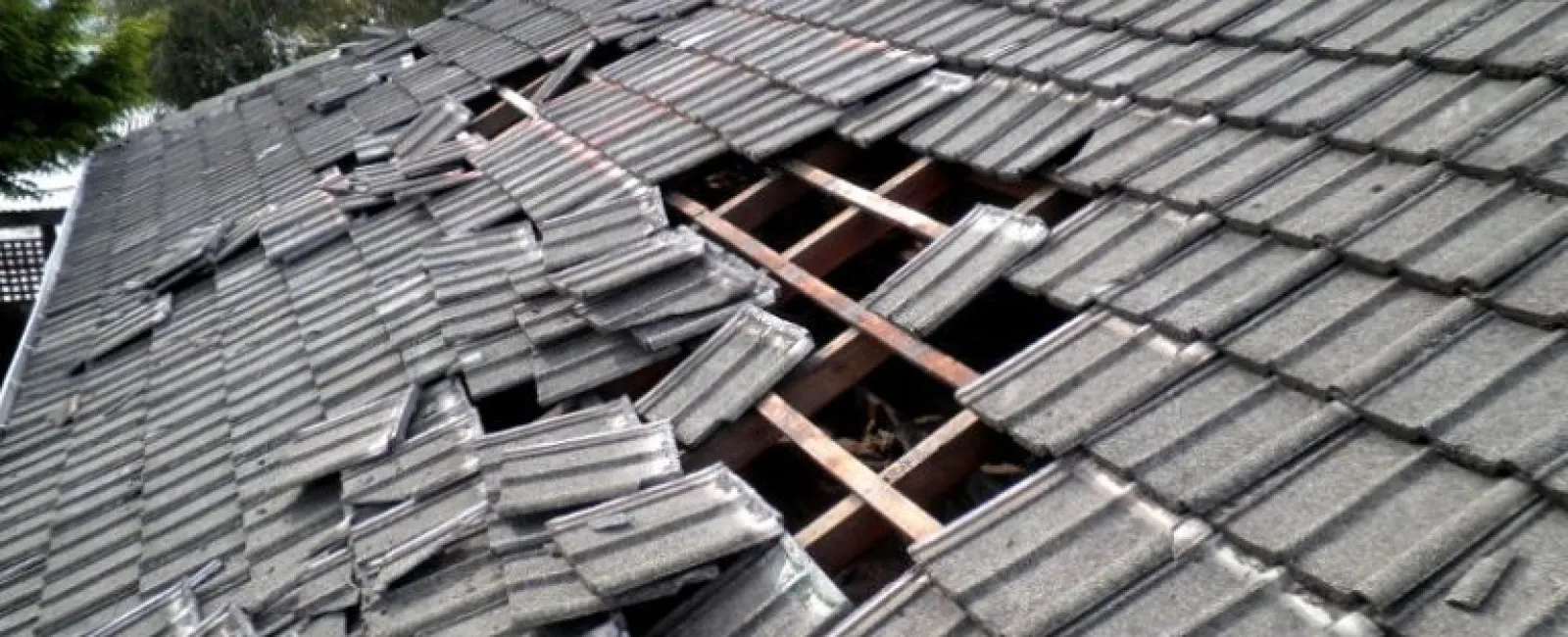After a storm, roof damage may be fairly obvious. But in other cases, your shingles or other roofing materials may be degrading without your knowledge, leaving your property vulnerable to leaks and damage.
Check for these signs of roof damage, both on the interior and exterior of your property, to identify roof issues before they become serious.
Common Interior Signs of Roof Damage
Keep an eye out for these signs of roof damage inside your property. Contact an experienced roofing contractor for an inspection if you notice any of them.
Mold or Mildew
If your roof is allowing water to leak into your home, it can quickly create the perfect breeding ground for mold and mildew in your ceilings and walls. If you see mold in these areas, you should contact a roofing contractor as well as a mold remediation company.
Ceiling Stains
Gray, brown, or yellow stains on your ceilings or walls indicate roof water damage. If you notice them, you should schedule a roof inspection.
Peeling Paint
Peeling, bubbling, or blistering paint on ceilings or walls is a sign of roof leaks or damage. If the peeling is caused by moisture, the likely source is a leaky or damaged roof.
High Energy Bills
Unusually high or inconsistent energy bills can be caused by a damaged roof, which reduces your home's ability to regulate the temperature.
Light Passing Through the Roof
You shouldn't be able to see daylight through your attic (unless you have windows). When you turn off your attic lights, check for gaps or cracks in the roof, which are signs of a roof leak in the attic.
High Humidity or Musty Odor
Aside from mold, mildew, stains, and peeling paint, high humidity, dampness, and a musty odor can all indicate water leaks because of water damage. It's a good idea to regularly monitor your home's humidity so you know when it's unusually high.
Common Exterior Signs of Roof Damage
Here are some common exterior signs of roof damage. Since they're not always obvious, you should have your roof regularly inspected to address any problems as soon as possible.
Damaged or Missing Shingles
One of the most common causes of shingle damage is severe weather, and compromised shingles mean a compromised roof. Strong winds can tear shingles off or loosen them, and flying debris can crack or dent them. Sometimes, shingles curl upward after being damaged. All of these issues leave the underlying layer vulnerable to water damage and deterioration, so damaged or missing shingles should be repaired as soon as possible.
Sagging Areas on the Roof
If you notice sagging areas on your roof or ceiling, your roof may have structural damage. This can be caused by excessive weight on the roof, rotted wood decking associated with water damage, or poor construction, and it should be addressed immediately.
Granules in the Gutters
An excessive amount of asphalt granules from your shingles in your gutters and downspouts can mean that your shingles are deteriorating. Granules are what protect your shingles from UV rays and extend their lifespan, so if they're lost, it may be time to replace your roof.
When inspecting your gutters and downspouts, look for buildup that resembles coarse sand. You should also check for any signs of wear on the shingles themselves, including bald spots or exposed fiberglass matting.
Leaks or Water Damage
As mentioned above, interior water stains, mold, bubbling paint, and musty odors can be signs of roof damage. If left unaddressed, leaks can cause mold growth and structural damage.
Keep in mind that water can travel along roof rafters or other roof components before dripping into interior walls, so the point of entry may not be directly above the visible damage.
Moss or Algae Growth
Moss or algae growth on your roof may seem harmless, but it can cause damage over time. These organisms trap moisture against your roof, which can deteriorate your roofing materials. If you notice green or black patches on your roof, you should use a gentle cleaning solution and a soft brush to remove them without damaging your shingles. Regular roof cleaning and maintenance will prevent algae and moss from growing in the first place.
Damaged Gutters, Downspouts & Flashing
If your roof was affected by storm damage, it can also be evident by dented or broken gutters and downspouts and cracked flashing. Signs of rust or corrosion on these components also indicate roof damage.
Avoiding Potential Roof Damage
The best way to avoid roof damage is to get yearly roof inspections. During an inspection, your roofing contractor will examine your shingles, flashing, gutters, and other components to assess the overall condition of your roof. This can help you avoid the need for costly repairs while also maintaining your roof's warranty.
A roof inspector can also inform you of the approximate age of your roof and whether the protective layer on your shingles is starting to wear off, which is a common cause of roof damage.
You should also have regular roof maintenance to remove debris and clean gutters, if necessary.
Contact Master Roofers for Expert Roof Repair
Whether your roof has been damaged by hail, wind, water, or debris, or just needs some maintenance, turn to Master Roofers to extend the lifespan of your roof and protect your property from damage.
Our certified roofing team has been providing residential roofing services, including emergency repairs and gutter services for over 80 years. Keep your property watertight and contact us for a free quote on roofing services.

